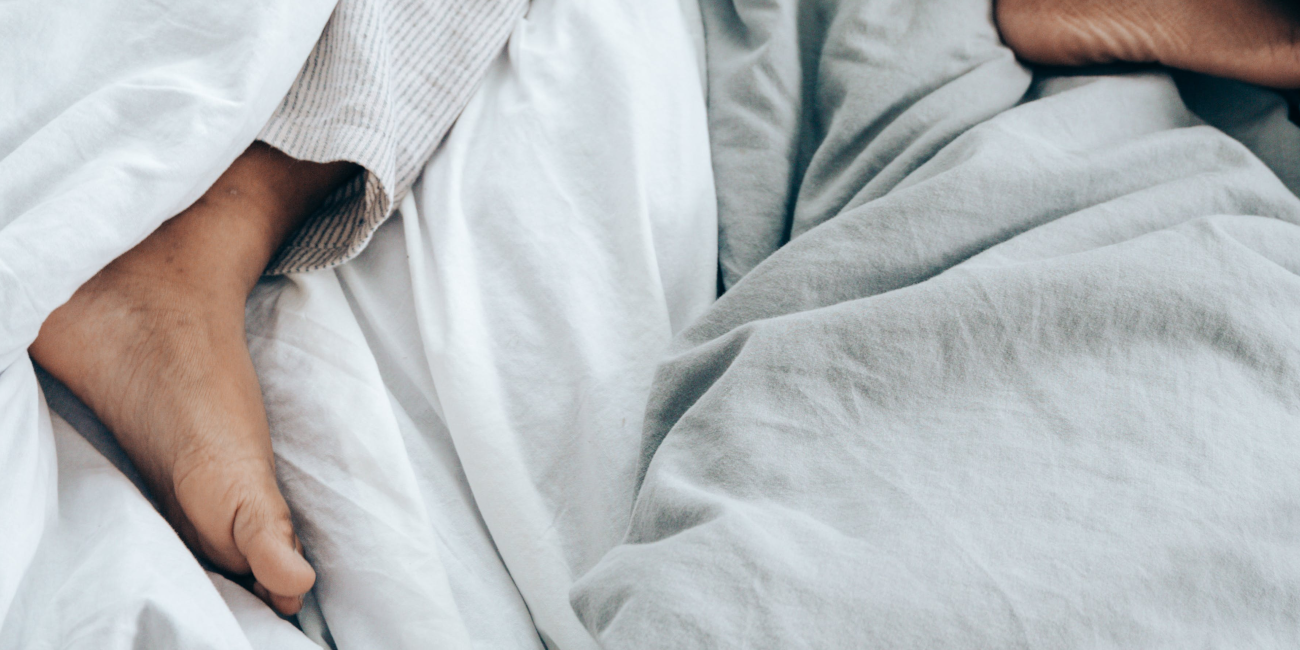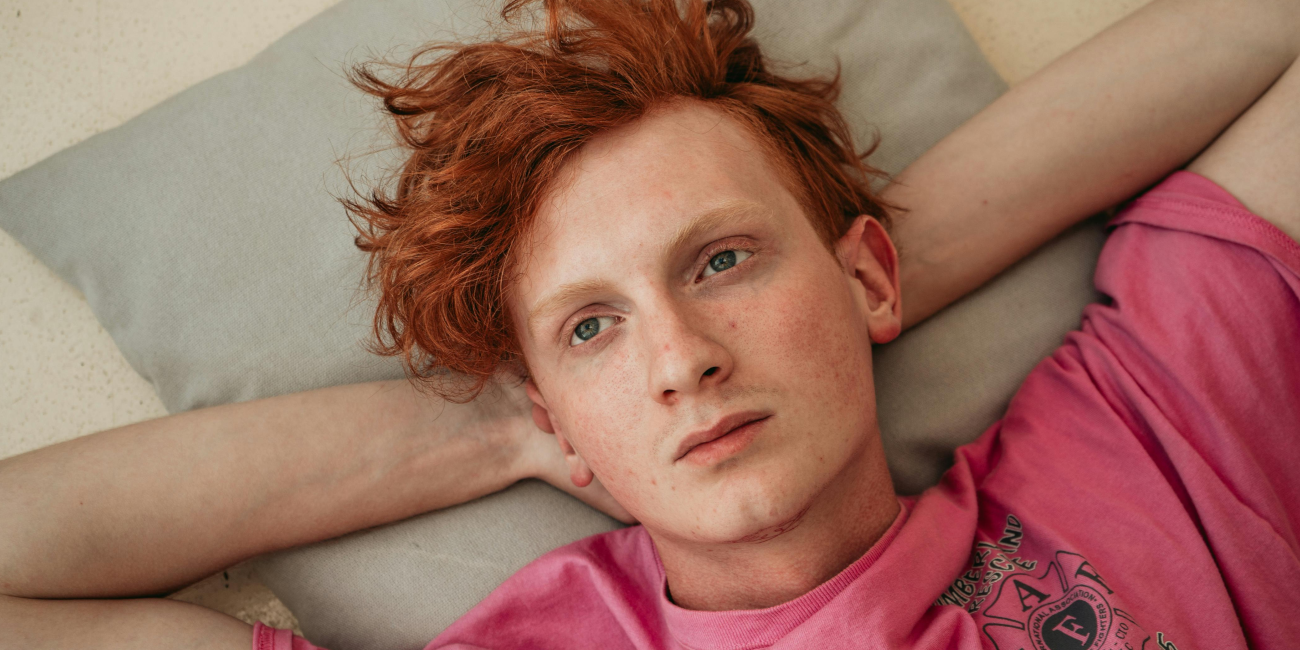A Review of Q3 2023 COVID-19 Pandemic Psychology Research
A Review of Q3 2023 COVID-19 Pandemic Psychology Research
The following research summaries offer an overview of recent studies that shed light on the interplay between COVID-19 and various psychological, behavioral, and physiological dimensions.
The global community has faced the unprecedented challenge of the COVID-19 pandemic in recent years. This viral outbreak has posed direct threats to public health and led to extensive research in various fields to understand its multiple facets. From exploring the behavioral patterns that impact vaccine hesitancy to investigating the psychological aftermath for those who contracted the virus, scholars have delved deep to provide insights into this global health crisis.
The following summaries offer an overview of recent studies that shed light on the interplay between COVID-19 and various psychological, behavioral, and physiological dimensions. These studies, hailing from diverse sources, collectively underline the multifaceted impact of the pandemic and the importance of a holistic approach in addressing its consequences.
Characterizing and predicting Canadian adolescents’ internalizing symptoms in the first year of the COVID-19 pandemic.
Green, Haley Elizabeth, "Characterizing and Predicting Canadian Adolescents’ Internalizing Symptoms in the First Year of the COVID-19 Pandemic" (2022). Electronic Thesis and Dissertation Repository. 8669. https://ir.lib.uwo.ca/etd/8669
The study examines the internal emotional struggles (e.g., depression, anxiety) experienced by Canadian adolescents during the first year of the pandemic, providing characterization and potentially identifying predictors of these symptoms.
Background:
- Apart from its direct health impacts, the pandemic caused significant social and economic disruptions, prompting concerns about its mental health consequences.
- Adolescents might be particularly vulnerable to these disruptions due to the increased prevalence of depression and anxiety during this phase, significant changes in peer interaction dynamics, and key neuro-maturation processes.
Early Studies:
- Initial studies indicated a concerning relationship between the onset of the pandemic and a rise in mental health symptoms among adolescents. For instance, around half of Chinese adolescents reported clinical levels of depression and anxiety in the early phase of the pandemic. Similar findings were noted in other parts of the world.
Longitudinal Observations:
- While initial studies showed an increase in internalizing symptoms among adolescents, the longer-term effects needed to be more understood.
- Some studies did show a continued rise in these symptoms, while others did not. There was a noted gender difference, with girls showing more depressive symptoms than boys. For instance, a large study in Iceland showed increased depressive symptoms in both genders but more in girls.
Intraindividual Variability:
- The article emphasizes the importance of considering intraindividual variability (variations in symptom severity within individuals over time), which may have implications for adjustment.
- Variability in negative emotions, which include internalizing symptoms, might indicate difficulties in emotion regulation, potentially making adolescents even more susceptible to pandemic-related stressors.
Predictors:
- Individual differences in stress reactivity are known, meaning that not all adolescents will react the same way.
- Girls may be more vulnerable, especially due to stressful interpersonal events related to pandemic restrictions.
- Parental mental health has a significant impact on adolescent mental health. If parents show internalizing symptoms, it can be predictive of adolescent symptoms.
- Low Socioeconomic Status (SES) is also a risk factor, with adolescents from lower SES households potentially at greater risk.
Current Study Overview:
- The study aimed to characterize the internalizing symptoms of Canadian adolescents during the first year of the pandemic.
- They looked at factors like sex, SES, and parental internalizing symptoms to predict the trend and variability of these symptoms in adolescents.
Parental Influence:
- There was a notion that parents with mild anxiety might have implemented more stringent routines and rules during the pandemic, which could stabilize adolescents' internalizing symptoms.
- Associations between parental symptoms and adolescent symptoms suggested links between their mental states. The study found evidence of reciprocal associations, indicating that the mental well-being of one might influence the other.
The article delves deep into understanding how the pandemic affected adolescents' mental health, emphasizing the importance of considering individual variability and parents and SES' significant role in this equation.
Extroverts are more hesitant to get the COVID-19 vaccine, study finds.
Baker, M. N & Merkley, E., (2023) Dynamic role of personality in explaining COVID-19 vaccine hesitancy and refusal. Frontiers in Psychology. doi.org/10.3389/fpsyg.2023.1163570.
The main finding is evident from the title: individuals with extroverted personalities are likelier to hesitate in getting the COVID-19 vaccine.
A recent study of over 40,000 Canadians revealed that extroverts were more hesitant about getting the COVID-19 vaccine during the pandemic's peak, contrary to the initial hypothesis. The research, led by Melissa Baker, Ph.D., of The University of Texas at El Paso and published in "Frontiers in Psychology," deviates from the predominant focus on political affiliations in vaccine hesitancy research and instead emphasizes the role of personality.
Using the "big five" personality model, which measures openness, conscientiousness, extraversion, agreeableness, and emotional stability, the study analyzed responses from Canadian adults between November 2020 and July 2021. The findings indicated:
Those higher in openness and agreeableness were more likely to get vaccinated. People with high conscientiousness, being detail-oriented and planners, were expected and found to be more inclined to get vaccinated. Participants with low emotional stability or those who experience intense emotions were less likely to get vaccinated. Surprisingly, extroverts were 18 percent more likely to decline the vaccine.
These results could inform future public health messaging strategies, as understanding the personalities of target demographics could lead to
Prevalence, correlates, and drivers of COVID-19 vaccine hesitancy among Canadians.
Legg, N. K., Switzer, A. C., Senay, Z., Reeves, J. T. H., Phiri, P., Rathod, S., Paterson, T. S. E., & Turner, B. J. (2023). Prevalence, correlates, and drivers of COVID-19 vaccine hesitancy among Canadians. Canadian Journal of Behavioural Science / Revue canadienne des sciences du comportement. Advance online publication. https://doi.org/10.1037/cbs0000377
This article likely explores the reasons why some Canadians are hesitant to receive the COVID-19 vaccine, quantifying the extent of hesitancy and examining its correlates.
This study aimed to gauge the prevalence, demographic and health-related triggers, and underlying reasons for COVID-19 vaccine hesitancy among Canadians. Employing two online surveys conducted between December 2020 to December 2021, with a total of 13,274 participants predominantly female, the research utilized mixed methods like Chi-square analyses and latent Dirichlet allocation analysis. By the end of the second survey, it was discerned that 11% remained unvaccinated, and 34% were unsure about receiving a booster dose.
Vaccine hesitancy was notably pronounced among the younger to middle-aged demographic, those with lower educational backgrounds, residents of less populated regions, individuals not associated with medically vulnerable groups, and non-health-care essential workers facing employment insecurities. The main reservations expressed included apprehensions regarding the vaccine's long-term effects, perceived inadequate testing, doubts about its efficacy, and a general distrust in medical research. Given the high hesitancy rates, the findings underline the significance of understanding and addressing these apprehensions, emphasizing the necessity of tailored vaccine promotion strategies targeting these specific groups, especially in the light of potential future pandemics.
Objective:
- Investigate the prevalence, demographic and health-related factors, and reasons for COVID-19 vaccine hesitancy and rejection among Canadians.
Key Findings:
- By the second survey, 11% remained unvaccinated, and 34% hesitated about getting a booster dose.
- Factors associated with vaccine hesitancy:
- Age: younger to middle-aged.
- Education: lower educational attainment.
- Residence: living in less populated areas.
- Health: not being or caring for someone medically vulnerable.
- Employment: insecurity and being a non-health-care essential worker.
- Significant interactions were found between certain demographic variables.
- Primary reasons for hesitancy:
- Concerns over long-term effects and side effects.
- Perception of inadequate testing.
- Doubts about the vaccine's effectiveness and necessity.
- Distrust in medical research.
Impact:
- High levels of hesitancy towards the COVID-19 vaccine and its boosters pose a threat to achieving herd immunity.
- Understanding and addressing these concerns is crucial, especially in the context of potential future pandemics.
- The study highlights specific groups and concerns that need targeted, relevant vaccine promotion strategies.
Anxiety and Depression in COVID Survivors - A Cross-Sectional Study Six Months Past the Acute Illness
Avula V R, Amalakanti S, M S, et al. (August 04, 2023) Anxiety and Depression in COVID Survivors - A Cross-Sectional Study Six Months Past the Acute Illness. Cureus 15(8): e42971. https://doi.org/10.7759/cureus.42971
Anxiety and depression among COVID-19 survivors is a phenomenon that has been studied and observed globally, reflecting the broader implications of the pandemic on mental health. The study evaluates the psychiatric sequelae of COVID-19 survivors six months after the acute phase of the illness. Here are the key findings and discussions of the study:
Key Findings:
- Prevalence of Anxiety and Depression: Six months after recovering from COVID-19, patients continued to display symptoms of anxiety and depression. The degree of these psychiatric symptoms was directly proportional to the severity of their COVID-19 infection.
- Comparison with Controls: COVID-19 survivors displayed significantly higher scores on the Hamilton Anxiety Rating Scale (HAM-A) and Hamilton Depression Rating Scale (HDRS) than controls who never contracted the virus.
- Severity Matters: Among the COVID-19 survivors:
- Severe cases exhibited the highest anxiety and depression scores.
- Moderate cases showed intermediary scores.
- Mild cases had the lowest anxiety and depression levels.
- Factors Correlating with Anxiety and Depression: A positive correlation was observed between the severity of anxiety and depression (as measured by HAM-A and HDRS) and the following factors:
- Duration of hospitalization.
- Stay in the Intensive Care Unit (ICU).
- Use of invasive oxygen therapy.
- COVID-19 and Its Psychological Aftermath: The aftermath of severe illnesses often includes psychological symptoms. This study observed that patients with severe COVID-19 infections, especially those hospitalized or admitted to the ICU, showed heightened levels of anxiety and depression. This is consistent with prior research.
- Female Survivors: The study suggests that female COVID-19 survivors may be at a higher risk of experiencing post-recovery anxiety than their male counterparts. This aligns with previous studies and brings up potential biological and sociocultural factors that might contribute to this observation.
- Long COVID and Mental Health: The lingering symptoms after recovering from the acute phase of COVID-19, often termed "Long COVID,” can include psychiatric symptoms. Existing guidelines from health organizations like the National Institute for Health and Care Excellence (NICE) list depression and anxiety as potential symptoms of Long COVID.
- Influence of Treatment on Mental Health Outcomes: The study found no significant difference in anxiety and depression levels between patients treated with remdesivir alone and those treated with a combination of remdesivir and corticosteroids. Other studies have echoed this observation.
- Duration of Hospitalization: The study found a positive association between the length of hospital stay and the severity of anxiety and depression. Prolonged hospitalization, with its associated stresses, can have lasting psychological impacts.
- Global Perspective: This study's findings resonate with global observations. Similar patterns of post-recovery psychiatric symptoms have been reported in various countries, underscoring the universal impact of the pandemic on mental health.
In conclusion, the study sheds light on the importance of holistic care for COVID-19 survivors, emphasizing the need for psychiatric assessment and intervention, especially for those with severe cases.
The Relationship Between Fear of COVID-19 and Psychological Distress in Tour Guides: The Mediating Role of Job Insecurity and the Moderating Role of Psychological Resilience
Jiang, Y., Huang, L., Guo, Y., Yang, Q., Li, H., Zhou, H., & Wu, K. (2023). The Relationship Between Fear of COVID-19 and Psychological Distress in Tour Guides: The Mediating Role of Job Insecurity and the Moderating Role of Psychological Resilience. Psychology Research and Behavior Management, 16, 3107-3119. https://doi.org/10.2147/PRBM.S417296
The mental well-being of tour guides, recognizing that their role as front-line representatives of the tourism industry puts them at increased risk for psychological distress, especially during a global health crisis.
Efforts should be made to:
- Provide Continuous Training and Counseling: Equip tour guides with knowledge about the pandemic and its implications to be better prepared and feel more secure in their roles. Additionally, provide counseling services to help them cope with their fears and anxieties.
- Reinforce Job Security: Even if the tourism industry faces downturns, tour operators and agencies should reassure their employees about the measures being taken to ensure their job security.
- Develop Resilience Workshops: Organize workshops focusing on building resilience and coping mechanisms. This can help employees not just in the current situation but in any future crises.
- Open Communication Channels: Ensure that there's a platform or forum where tour guides can share their feelings, concerns and get answers to their queries. This helps in reducing the uncertainty and fear associated with the pandemic.
- Promote Health and Safety: Demonstrating that the health and safety of employees is a top priority can go a long way in alleviating job-related fears. Regular health check-ups, provision of safety equipment, and health insurance can be some measures.
- Flexibility: Offer flexible working hours, consider hybrid models where possible, and provide paid sick leave. This ensures that employees feel free to work if they feel unwell, reducing the risk of spreading the virus.
- Acknowledge and Reward: Recognizing and rewarding the hard work and dedication of tour guides, especially during such challenging times, can boost morale and mitigate feelings of insecurity.
In conclusion, the tourism industry, especially tour guides, was significantly affected by the COVID-19 pandemic. The fear of the virus and job insecurity exacerbated the psychological distress experienced by many in the profession. However, with proactive measures, open communication, and a focus on building resilience, it is possible to support these front-line workers better and ensure their well-being in the face of current and future challenges.
Mental health status and related influencing factors in patients with COVID-19
He, Y., Huang, L., Chen, J., Long, L., Zhang, L., Hui, X., Zhang, Q., Guan, M., Xie, Y., & Sun, J. (2023). Mental health status and related influencing factors in patients with COVID-19. BioMed Central Psychology, 11, 225.
Background and Objectives:
- The COVID-19 outbreak has led to many patients needing hospital care. There's a gap in the data about the mental health of these patients. This study aims to understand the prevalence of anxiety, depression, and insomnia among COVID-19 patients and to explore the links between these mental health issues and psychological factors.
Methods:
- 387 COVID-19 patients in a shelter hospital participated in an online cross-sectional study. The study assessed anxiety, depression, insomnia, social support, coping styles, and emotional regulation.
Results:
- A high percentage of patients showed symptoms of anxiety (21.80%), depression (49.0%), and insomnia (63.70%). Positive factors like objective social support and a positive coping style correlated with reduced levels of these mental health issues. On the contrary, factors like higher education, negative coping style, and the self-perceived severity of the illness were linked to increased mental health problems. Interestingly, emotional regulation did not significantly correlate with any of these mental health challenges.
Discussion:
- The study highlights significant psychological distress among COVID-19 patients, with anxiety, depression, and insomnia being predominant. Several key insights were found:
-
- Perception of the severity of the illness directly influences anxiety, depression, and insomnia levels.
- Higher education levels surprisingly correlated with increased sleep disturbances, potentially due to higher information exposure and cognitive rumination.
- Tangible support (objective support) from external organizations or through online means was beneficial for the patient's mental health, especially in the isolation context of the pandemic.
- Adopting positive coping styles can serve as a protective factor for patients, whereas negative coping and certain demographic factors (like higher education or divorce) might exacerbate mental health problems.
- Unexpectedly, emotion regulation strategies weren't found to have a significant association with the mental health status of COVID-19 patients.
Conclusions:
- COVID-19 patients experience significant psychological distress, with factors like objective support and coping styles playing crucial roles in their mental well-being. Understanding these factors can help tailor future psychological interventions for similar outbreaks.
Study reveals link between self-perceived antibody response and actual COVID-19 protection
Dimitroff, S. et al. (2023) "Estimation of antibody levels after COVID-19 vaccinations: Preliminary evidence for immune interoception", Biological Psychology, 182, 108636. https://doi.org/10.1016/j.biopsycho.2023.108636
Background:
- The central nervous system (CNS) and immune system are closely connected. The CNS manages the immune system's functions and receives signals from it via the vagus nerve.
- The brain interprets these signals in the insular cortex, informing it about various bodily systems' state.
- Interoceptive accuracy, or the ability to perceive internal bodily signals, has mainly been measured for the cardiac system but rarely for the immune system.
- Some studies have found a link between self-rated health (SRH) and mortality and between SRH and immune markers. This suggests that SRH may be connected to the body's ability to perceive its immune health.
Findings:
- 166 participants were studied, with antibody levels ranging from 136 to 10,938 BAU/ml of IgG. All participants exceeded the threshold for positive antibody levels.
- Most were vaccinated with the BNT162b2 vaccine, followed by the mRNA-1273, with few receiving heterologous vaccinations.
- Those with heterologous vaccinations had lower IgG levels than those with a single type of mRNA vaccine.
- Age and time since the last vaccine were factors that were associated with lower IgG levels. Conversely, higher body mass index (BMI) was associated with increased antibody levels.
- Participants' self-estimated antibody levels and feelings of protection significantly matched their actual IgG levels.
- Other factors like sleep, physical activity, and heart rate variability did not predict antibody levels, but feelings of protection were linked with psychological health and sleep duration.
Conclusions:
- Participants perceived antibody levels and feelings of protection against COVID-19 accurately reflected their actual antibody levels.
- Individuals who believed they had lower antibodies generally did have below-average levels for their age and BMI.
- Most participants with particularly high antibody levels believed they had high antibodies, suggesting people with extreme IgG levels might accurately perceive their status.
- The study suggests that a person's feeling of protection or belief in their antibody count might be rooted in an innate understanding of their immune health.
Summary
The COVID-19 pandemic has had far-reaching effects on global public health, economies, and daily life. As a result, the field of psychology has seen a surge in research related to the pandemic to understand its impacts on mental health, behavior, and societal dynamics. Here's a brief overview of some major themes in COVID-19 pandemic psychology research:
- Mental Health Impacts:
- Stress and Anxiety: Studies found increased stress and anxiety levels related to fears of the virus, concerns about loved ones, and uncertainties about the future.
- Depression: Economic downturns, social isolation, and the continuous stream of distressing news have been linked to rising rates of depression.
- Post-traumatic Stress Disorder (PTSD): Frontline workers, COVID-19 patients, and those who've lost loved ones may experience PTSD.
- Behavioral Responses:
- Health Behaviors: Research on adherence to health guidelines such as mask-wearing, social distancing, and vaccination.
- Panic Buying: There was notable panic buying early in the pandemic, and researchers sought to understand the psychology behind such behavior.
- Adaptation to Remote Work and Learning: As many shifted to working or studying from home, researchers examined the psychological effects of this transition.
- Social and Group Dynamics:
- Social Stigma: There were instances of stigmatization of certain groups associated with the virus's origin or high-risk occupations.
- Group Behavior: Research on how misinformation spreads, group compliance to health guidelines, and collective resilience.
- Social Connection: As physical distancing measures were implemented, there was interest in understanding the importance of social connections and the role of virtual interactions.
- Cognitive Responses:
- Risk Perception: How individuals perceive the risks associated with COVID-19, which influences behavior.
- Misinformation and Cognitive Biases: Examination of how false information about the virus spreads and the cognitive biases at play.
- Special Populations:
- Frontline Workers: Addressing the unique mental health challenges faced by healthcare workers.
- Children and Adolescents: Research on the pandemic's impact on youth, especially related to remote learning and social isolation.
- Elderly Population: With seniors being at higher risk, studies focused on their mental well-being, especially those in care facilities.
- Interventions and Coping:
- Digital Mental Health Tools: With in-person therapies limited, there was a push towards telehealth and digital mental health solutions.
- Resilience and Coping: Strategies to cope with pandemic-induced stress, anxiety, and other mental health challenges.
- Cultural and Cross-Cultural Studies:
- Examination of how different cultures respond to and cope with the pandemic, understanding the role of cultural norms and values in behavioral responses.
In summary, the psychological research stemming from the COVID-19 pandemic is vast and varied, addressing the multifaceted ways the crisis has impacted individual and collective well-being. The findings from this body of research will likely inform public health policies, therapeutic interventions, and societal strategies for years to come.





